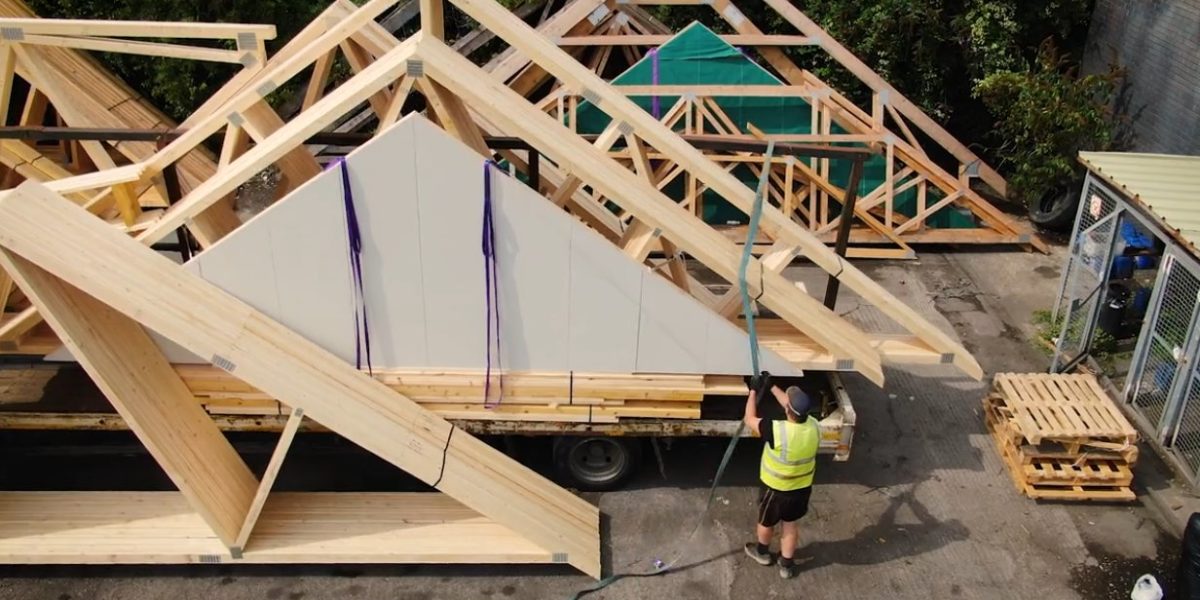When planning to build a new home or renovate an existing one, one of the most important decisions you’ll have to make is selecting the right roofing system. In this blog, we will be discussing two popular options: roof trusses and rafters. We will explore the benefits of each, highlight their differences, and explain which of the two are considered stronger and easier to fit.
Before delving into the details, let’s understand what roof trusses and rafters are. Rafters are the traditional method of roofing that has been used for centuries. They are individual sloping beams that extend from the ridge of the roof down to the eaves. Trusses, on the other hand, are pre-fabricated triangular-shaped structures made of wood or steel, consisting of top chords, bottom chords, and diagonal webbing.
Now let’s dive into the advantages of roof trusses:
Strength:
Roof trusses are specifically engineered to provide superior strength and structural integrity. The triangular configuration of trusses distributes the weight of the roof evenly, significantly reducing the risk of sagging or collapsing. Rafters, while strong in their own right, lack the inherent strength and stability of trusses.
Span:
Trusses can span much larger distances than rafters. This allows for wider open-plan living spaces, eliminating the need for internal load-bearing walls or support posts. With trusses, you can achieve a more flexible and spacious interior design.
Versatility of roof trusses:
Trusses can be customised to fit various architectural designs. They are available in a range of shapes, sizes, and configurations to suit different roof types, such as gable, hip, or mansard roofs. This versatility gives architects and homeowners more design freedom and flexibility.
Efficiency:
Roof trusses are prefabricated off-site, which means they can be manufactured to exact specifications in a controlled environment. This ensures precision and reduces the potential for errors during installation. Additionally, the use of trusses speeds up the construction process, saving time and labor costs.
Cost-effectiveness:
While the initial cost of trusses may be slightly higher than rafters, their long-term benefits outweigh the investment. The increased strength, efficiency, and versatility of trusses can result in savings on maintenance and repairs over the life of the roof. Moreover, the reduced construction time translates into lower labor costs.
Design and attic space:
With rafters, the traditional triangular shape limits the available space for storage or a usable attic. On the other hand, trusses can be designed to create a spacious attic area, providing additional living or storage space. This is especially beneficial if you have a small lot and need to maximize every square foot of your property.
In conclusion, roof trusses offer numerous advantages over rafters. They are stronger, more versatile, and more efficient. Although there may be a higher upfront cost, the long-term benefits outweigh this initial investment. Additionally, the design flexibility and increased attic space make trusses an attractive option for homeowners. If you are looking for a roofing system that combines strength, efficiency, and design versatility, roof trusses are the way to go.
Remember to consult with a professional architect or structural engineer to determine the best roofing solution for your specific needs.
Our truss designers are fully trained in using Mitek Pamir design software, and our floor designers use Miteks 20/20 design software. We undertake regular training to ensure that we are up-to-date with the latest amendments to manufacture and construction on site. We will often consult our customer to ensure that what we design will work for the construction team on site, saving labour time whenever possible. Discover them here: https://www.nuneatonrooftruss.co.uk/3d-drawings/


Comments are closed.